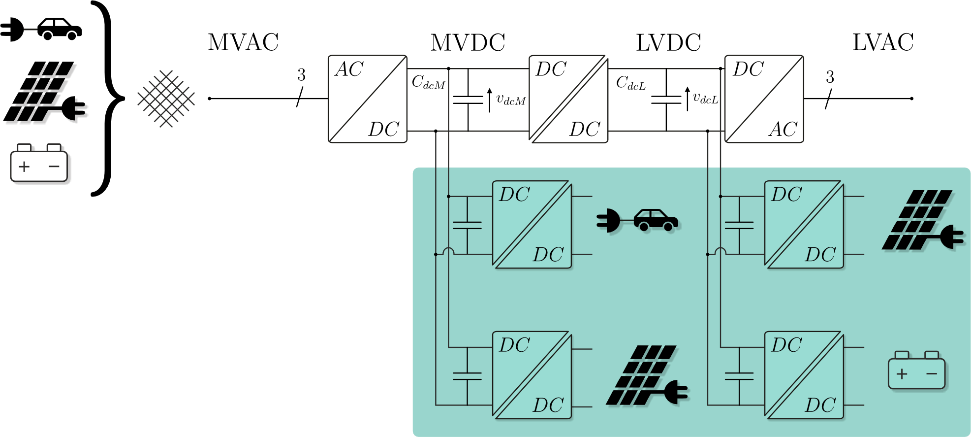Asynchronous Grids
Asynchronous grid connections are an essential part of the future power system. They allow to split the grid in smaller subsystems, that operate autonomous and can be controlled decentrally. Power electronic devices are able to establish a connection between asynchronous grids and control the exchanged power in an intelligent way. A potential solution for this is the Solid-State Transformer (SST).
An SST is a complex power electronic system aiming to substitute or enhance conventional transformers at a substation level (medium voltage to low voltage). The SST is capable of not only transforming the voltage similar to a conventional transformer, but can provide additional degrees of freedom, in terms of voltage (amplitude, frequency and phase) and current control (active or reactive power), depending on the operation scenario (grid-forming or grid-following).

Technical Analysis
The advent of silicon and silicon-carbide power switches have made the SST a very popular research object. This is why the SST has been under investigation from a hardware point of view, for more than a decade. The core concepts, such as the high-frequency transformer, have been proposed in the late 70s and 80s [McMurry 1979]. Recent research endeavors often focused on the development of new topologies, low-level hardware improvements evolving around efficiency or control algorithms on a device level.

System Level Analysis
The missing technical link to make the SST applicable in current distribution grids is the lack of studies at the system level; the SST has been investigated thoroughly but mostly with regards to the directly connected entities and considering its impact on a large-scale network. The same goes for parallel operation of the SST or inverter-based resources in general.
Therefore, the goal of our research group is to expand the research to the system level and investigate the impact of the SST on the distribution grid and vice versa. This includes services and features that an SST can provide to a grid, which can range from frequency and voltage support to the easier integration of energy storage systems and EV-charging stations.

Economic Analysis
The next step to render the SST technology ready for deployment in the power system is showing its economic viability. Our research group is developing scenarios in which the SST can offer clear advantages over conventional solutions and analyzes them on an economic level. The final goal will be the development of different business cases in which the SST can excel and enhance the existing power system.
